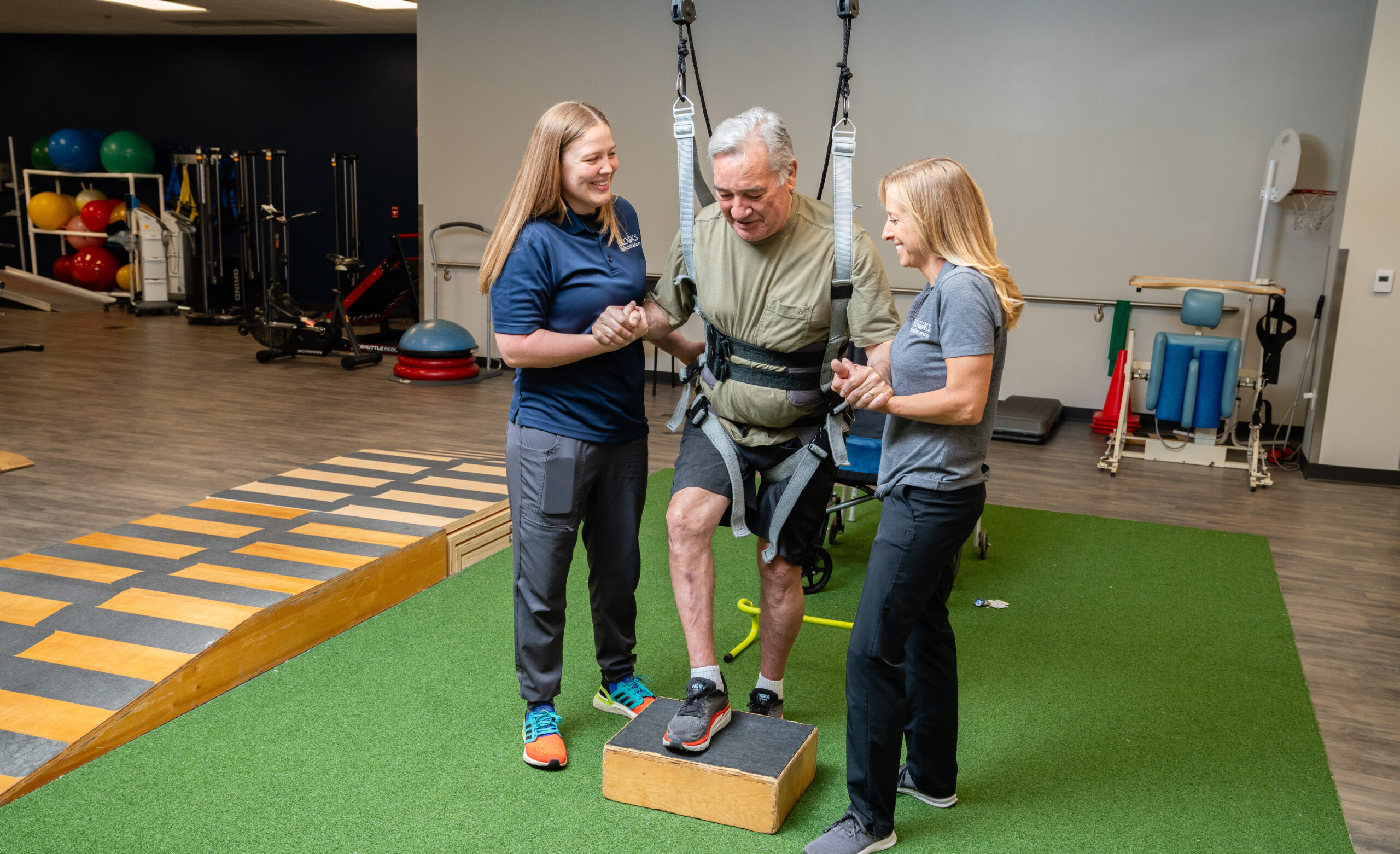Cervical spinal injury results due to the deformation of the spinal cord column. The cervical spinal column is the uppermost part of the spinal cord, which consists of seven vertebral levels (C1 – C7) forming the neck. Cervical spinal injuries are more severe as it goes higher up in the spinal cord and may result in death.
The undamaged lower part of the spinal cord is called the neurological level, while the cervical spinal cord injury severity can be complete or incomplete. Cervical spinal cord injuries can be dangerous since they might prevent central nervous system-controlled breathing.
Brooks Rehabilitation offers many spinal cord injury services to help minimize head and neck trauma in the event of an injury.
Complete vs. Incomplete Cervical Spine Injury
Cervical spine injuries can be complete or incomplete, depending on the level of the damage.
Incomplete Cervical Spine Injury
The cervical spinal cord involves the areas of your neck and shoulder. This means that cervical spinal cord injuries can cause tetraplegia or quadriplegia, which can result in little or no movement or feeling from your neck or shoulder downwards. After a complete cervical spine injury, one side or both sides of the body can still function, allowing some communication between the body and the brain.
Symptoms and Prognosis of Incomplete Cervical Spine
Incomplete cervical spine injury is the most common type of spinal cord-related damage. The brain can still send signals to the injured site when incomplete cervical spinal cord injury occurs. In some cases, what may seem like a complete neck injury symptom in the early weeks due to swelling, may turn out to be incomplete when the swelling reduces.
While incomplete and complete cervical spine injury causes may be similar, a gunshot, car accident, fall, or sports injury may entirely or partially affect the spinal cord. What determines whether it is a complete or incomplete injury is often the position you are sitting in at the time of the damage.
Incomplete cervical spine injuries can also originate from infections, medical negligence, and other injury sources. For instance, incomplete neck injury symptoms can include:
- Ability to move specific muscles below the place of injury
- Continued sensation below the injured site
- Chronic pain below the injured area
Complete Cervical Spine Injury
Complete cervical spine injuries damage the affected area of the spinal cord and can cause paraplegia, paralysis of the lower half of your body, or tetraplegia, paralysis of all four limbs. It eliminates the ability of the brain to send signals down the injured site.
Symptoms and Prognosis of Complete Spine Injury
Just like incomplete cervical spine injury, complete injury can result from a car accident, medical negligence, gunshot, fall, sports injury, and infections. Previously, it was challenging to virtually separate a complete cervical spine injury from an incomplete injury. However, with time, slight variations may begin to show.
For instance, complete neck injury symptoms may include:
- Loss of feeling below the injured site
- Inability to move below the injured area
- Control issues with your bowels and bladder
- Trouble breathing on your own if the injury is severe enough in your spinal cord
Cervical Spine Injury Prognosis and Treatment
Cervical spinal cord injuries are often the most severe because they occur closer to the brain and affect a more extensive area of the body. Deformation in the spinal cord is severe and can result in death. A cervical spine injury can also result in temporary or permanent paralysis of the entire body, starting at the neck.
A spinal cord injury requires immediate care to address life-threatening consequences and reduce the danger of long-term side effects. Doctors do several diagnostic procedures, including evaluating the patient’s strength and sensation in their arms and legs, to assess the severity of a cervical spinal cord injury. Spinal cord injury specialists examine the body to look for fractures or other abnormalities in the spine using comprehensive imaging assessment techniques.
Neck injury symptoms such as swelling can be controlled by methylprednisolone (Medrol) and dexamethasone (Decadron). Doctors may also suggest surgery in specific circumstances.
You can still recover whether you have been diagnosed with complete or incomplete cervical spine injuries as long as you seek early rehabilitation and medical care, maintain a positive outlook, and be prepared to rely on your current support network.
The prognosis for complete vs. incomplete cervical spinal injuries
Cervical spine injury symptoms depend on the site of injury and type of injury, either complete or incomplete. Incomplete cervical spine injury victims tend to respond more rapidly to treatment than those with a complete cervical spine injury, since the brain’s ability to communicate with the rest of the body is usually less compromised.
Spinal cord and spine injuries that are open or penetrating – particularly those brought on by gunshots – may present slightly different difficulties. Most spinal injuries caused by gunshots are stable, meaning there is less risk of the affected section moving excessively and potentially dangerously.
The doctor will assess the level of injury and decide whether the damage is complete or incomplete following a thorough neurological examination. After being discharged to rehabilitation, the initial degree of disability and function may also vary. It is critical to remember that these are only general recommendations and that individual results may differ.
Rehabilitation Options Offered at Brooks Rehabilitation for Cervical Spinal Injury Patients
Cervical spinal cord damage is a severe and unexpected injury. However, it is neither a death sentence nor a reason to give up hope. You can progress toward completeness and wellbeing with the aid of commitment to your rehabilitation and quality medical care.
At Brooks Rehabilitation, we have a team of qualified and experienced physical therapists who treat spinal injuries. We utilize advanced technology to help patients progress during their rehabilitation journey. Feel free to contact us for any assistance.
